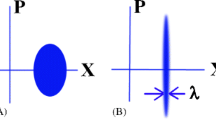Abstract
In the study of solutions behavior of various mathematical physics equations their limit state when time tends to infinity (so-called attractors) is of particular interest. At the works of russian mathematicians M.I. Vishik and V.V. Chepyzhov and american mathematician G. Sell a new approach for the attractors study based on the consideration of trajectory spaces and trajectory attractors of the corresponding equations was proposed. However, for a large number of hydrodynamics equations this theory could not be applied because of the conditions of the translational invariance and of the closure of a trajectory space. In the introduction of this article a brief summary of the attractors theory for autonomous systems based on the concept of the trajectory space without the assumption of its translational invariance is presented. As an application of this theory, the existence of the global attractor for autonomous model of the Bingham medium motion in the case of periodic spatial variables in proved.
Similar content being viewed by others
References
O. A. Ladyzhenskaya, “On the determination of minimal global attractors for the Navier–Stokes and other partial differential equations,” Russ. Math. Surv. 42 (6), 27–73 (1987).
V. V. Chepyzhov and M. I. Vishik, Attractors for Equations of Mathematical Physics (Amer. Math. Soc. Colloq. Publ., Providence, 2002).
G. R. Sell, “Global attractors for the three-dimensional Navier–Stokes equations,” J. Dynam. Differ. Equat. 8, 1–33 (1996).
M. I. Vishik and V. V. Chepyzhov, “Trajectory attractors of equations of mathematical physics,” Russ. Math. Surv. 66, 637–731 (2011).
D. A. Vorotnikov and V. G. Zvyagin, “Trajectory and global attractors of the boundary value problem for autonomous motion equations of viscoelastic medium,” J. Math. Fluid Mech. 10, 19–44 (2008).
D. A. Vorotnikov and V. G. Zvyagin, “Uniform attractors for non-autonomous motion equations of viscoelastic medium,” J. Math. Anal. Appl. 325, 438–458 (2007).
V. G. Zvyagin and S. K. Kondratyev, “Approximating topological approach to the existence of attractors in fluid mechanics,” J. Fixed Point Theory Appl. 13, 359–395 (2013).
A. V. Zvyagin, “Attractors for a model of polymer motion with objective derivative in the rheological relation,” Dokl. Math. 88, 730–733 (2013).
V. G. Zvyagin and S. K. Kondratyev, “Attractors of weak solutions to the regularized system of equations of motion of fluid media with memory,” Sb. Math. 203, 1611–1630 (2012).
V. G. Zvyagin and S. K. Kondrat’ev, “Attractors of equations of non-Newtonian fluid dynamics,” Russ. Math. Surv. 69, 845–913 (2014).
E. C. Bingham, Fluidity and Plasticity (McGraw-Hill, New York, 1922).
G. Duvaut and J. L. Lions, Inequalities in Mechanics and Physics (Springer, Berlin, Heidelberg, New York, 1976).
V. V. Shelukhin, “Bingham viscoplastic as a limit of non-Newtonian fluids,” J. Math. Fluid Mech. 4, 109–127 (2002).
Jong Uhn Kim, “On the initial-boundary value problem for a Bingham fluid in a three-dimensional domain,” Trans. Am. Math. Soc. 304, 751–770 (1987).
A. V. Fursikov, Optimal Control of Distributed Systems. Theory and Applications (Transl. Math. Monogr., Providence, 2000).
V. G. Zvyagin and S. V. Kornev, “Existence of an attractor for three-dimensional model of the Bingham fluid motion,” Russ. Math. (Izv. VUZ) 60, 64–67 (2016).
Author information
Authors and Affiliations
Corresponding author
Additional information
Submitted by F. G. Avkhadiev
Rights and permissions
About this article
Cite this article
Zvyagin, V. Attractors theory for autonomous systems of hydrodynamics and its application to Bingham model of fluid motion. Lobachevskii J Math 38, 767–777 (2017). https://doi.org/10.1134/S1995080217040229
Received:
Published:
Issue Date:
DOI: https://doi.org/10.1134/S1995080217040229



